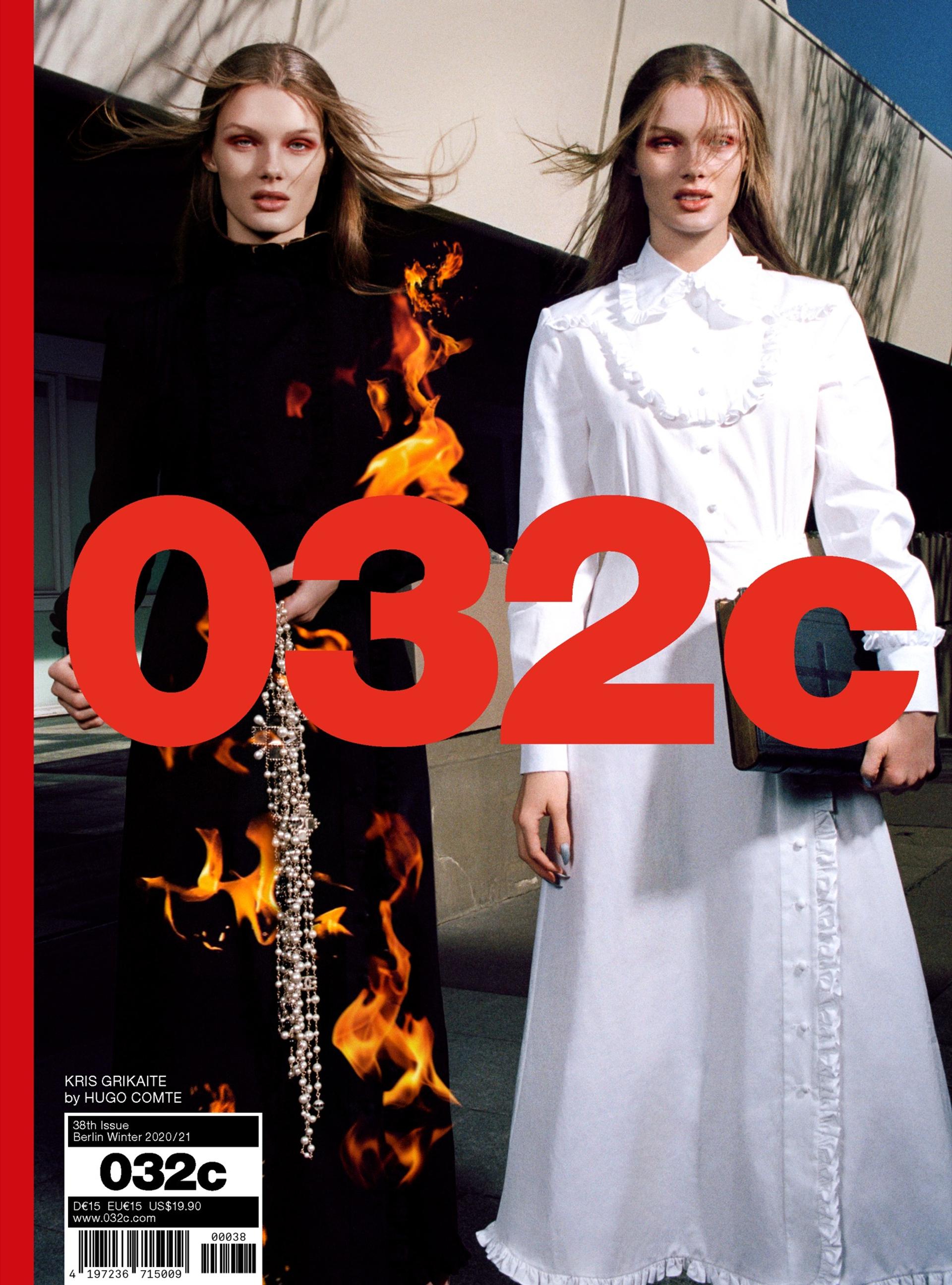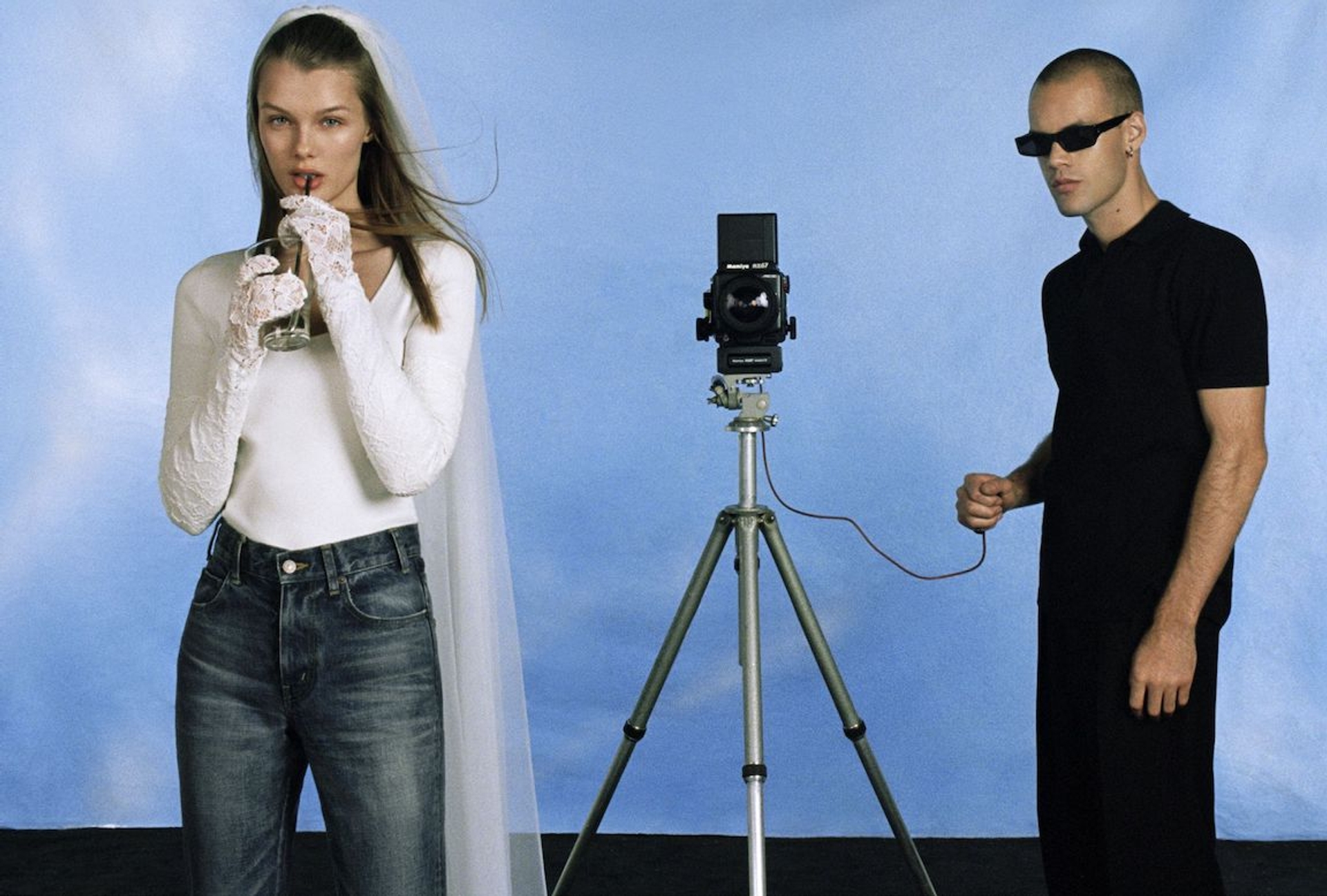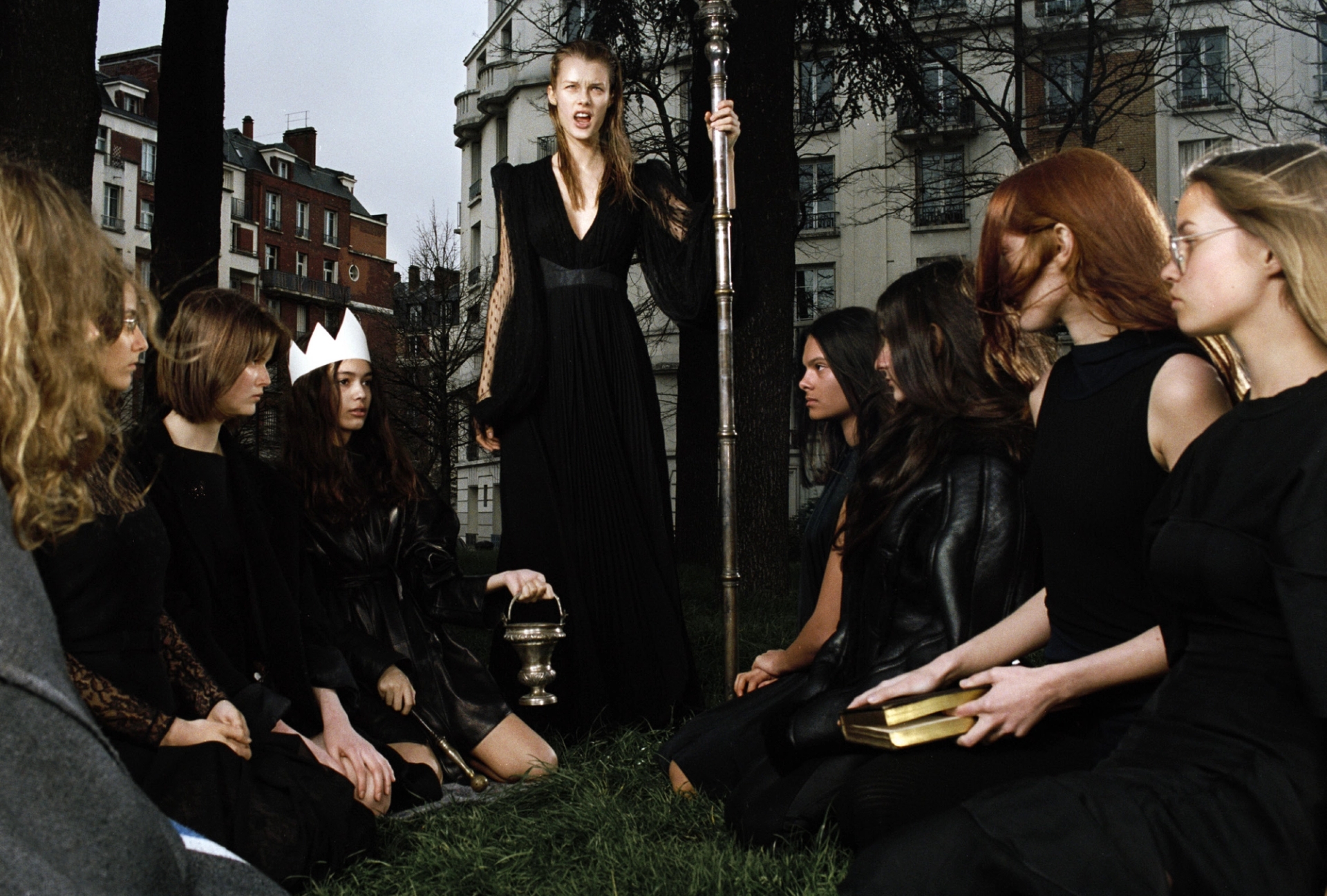Archetypes, Atmosphere, Attitude: HUGO COMTE Shoots KRIS GRIKAITE for 032c
Photographer HUGO COMTE shot KRIS GRIKAITE in Paris for the new 032c Issue #38 (Winter 2020/2021), casting the Russian-Lithuanian industry top in a variety of roles for a series of evocative vignettes. Each character represents a facet of Grikaite’s own persona, Comte explains, while exploring feminine archetypes within backdrops reminiscent of familiar narratives both fictional and lived, from the romantic tales we absorb in our youth to representational paradigms of adolescence and coming of age. Styled by 032c fashion director MARC GOEHRING, Comte’s second time behind the lens for a 032c cover feature follows his gothic portrait of IRINA SHAYK for Issue #36 (Summer 2019). This edition’s lyrical and sometimes disquieting story expands upon a repertoire that has landed the image-maker collaborations with Dua Lipa, campaigns for brands such as Burberry, and epic editorials for such publications as Italian Vogue, among other projects spanning fashion, music, and culture. Comte has a known penchant for high-gloss 1990s fashion photo classicism, which he blends with dark Renaissance chiaroscuro and Stanley Kubrick realism for a history-steeped yet futuristic style that has led some in the industry to refer to his work as “generation-defining.” As we launched the latest issue of 032c, we asked him how he felt about this (for now) unofficial moniker.
Kris wears a top by Balenciaga, denim by Celine, and a veil and gloves by Maison Margiela.
Do you identify with being called “generation-defining” – with this idea of your images representing a particular moment?
Ahah, that’s bold – I didn’t know! I think my upcoming projects could have a deeper impact on my audience, and maybe get closer to this statement. I’m coming from an architecture background, and it’s kind of in my genes to have that desire to create a world inspired by and dedicated to people of my time. I think the energy in my images speaks to a lot of people – we all want to feel some real attitude and intention in an era when the digital gives everything the same texture. My images can be a bubble for whoever wants some real intention, with a strong impression of dreaming. And there’s a lot of people like that out there in this generation, I guess.
You have cited the 1990s work of photographers such as Steven Meisel as major influences. Do you think that this time is especially connected to our own, visually or culturally?
I can feel a big gap in the images of the 90s and those of today, in terms of impact. Everyone from that time will tell you the same – models, stylists, hair and makeup artists who were working at that moment will always have a tone of nostalgia when they speak about their work. I don’t think we are really connected to it – I think it’s the opposite. This revival is due to the lack of energy and what we really miss from that time.
The 032c shoot takes form as a series of highly narrative, individually-themed vignettes. It reminded me of French literary traditions – Emile Zola, Honoré de Balzac – where you have books in a series telling different interlaced stories. Where were you looking for inspiration for your stories?
It’s very personal, and more than ever before, I based everything on the model. As I do most of the time, I reviewed hundreds of images of her to see what was missing in the way she is represented. And I figured out that the “real” Kristina that I could feel was never expressed in any photographs before. So I just started to imagine her with some attitudes and figured out that she could have a lots of phases to express. Then came the idea of bipolarity, with the twins, and the idea to explore past, present, and future lives – the teenage wallpaper, the mother/baby moment, etc. There is a lot of little details in there, a lot of layers to understand.
Kris wears a bustier by Valentino, a skirt by Celine, tights by Mugler, and a necklace by Chanel.
Kris wears a sweater by Miu Miu, panties by Eres, a garter belt by Opaak, and socks by Prada.
Are you interested in the notion of the archetype? As in, the wise man, the trickster, the mother – these recurring characters that we use in psychoanalysis, mythology, or literature to understand ourselves and our culture.
I love archetypes – the superhero, the mask, the knight, the savior, the nun, the devil, the punk, the bride. This whole story uses archetypes to highlight my vision of the different phases of Kris’ personality. Using well known symbols in order to express some inner feelings is a sort of leitmotif for me.
In general, what is the role or evolution of narrative or storytelling in your work? In fashion photography at large?
I don’t think of storytelling as something linear. It’s more about a series of intentions and emotions that emerge from the model. The attitude is everything, and that creates the feeling of narrativity. I actually don’t think that my images ever depict a story, but they definitely host the potential of stories, for whoever wants to see something in it.
I also see flashes of surrealism, flashes of Hitchcock – what other movements or cultural moments, going back further than the 1990s maybe, have inspired this sort of psychological approach?
I’m always more interested with a reference that influences my process, as opposed to my style or my aesthetic. The main influence is definitely architecture, based on the idea of atmosphere. Surrealism is definitely there – I actually use Dali a lot, for my group shoots, and especially for an upcoming exhibition in March 2021. I also look often at Alex Katz, Jared French, and George Tooker, among others from the realism period. Hitchcock definitely, as well as Lynch, Tarantino…
Kris wears head-to-toe Balenciaga.
Would you call your approach “cinematic”?
It is cinematic in the sense that my models always have an intention, in the way they stare at you or seem to be watching something outside of the frame. You feel strongly that there is something before and something after the photographs, which is what cinema is about: a series of moments. Pulp Fiction is everything for me. I always want to create a body of work that people remember more for the attitude and the coolness of the characters more than for the story itself, and this movie always gives me this feeling.
Do you see more film or video on your horizon?
I’m about to start the production of my first short movie next year. It’s already written, so stay tuned!
What do you see in the near (or distant) future of image-making, in fashion and beyond?
I really work with the intention of empowering the woman in the image. I don’t want to see any more images where she systematically appears as a victim or a support for the man – all those images where women are shown without intentions, or only small ones. A deep change in mindset is needed – we need projects with real meaning, purpose, and strategy, with deep psychological dimensions. That’s the challenge for me.
Pictured here is a t-shirt and pants by LEVIS, a jumpsuit by CHANEL, a dress by LANVIN, a dress by COPERNI, a jacket by MUGLER, a dress by GIVENCHY, a dress by BALENCIAGA, a jacket by MUGLER, a dress by ATLEIN, and a dress by CHANEL.



